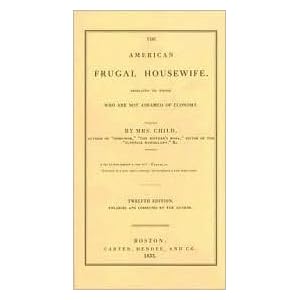Faced with so many Catholics, even the leaders of many Catholic institutions, openly rejecting the teaching of the Church, I had to ask myself last week: Why shouldn’t I go the same way? If Georgetown and Notre Dame are allowed to call themselves Catholic, why should I feel compelled to avoid their purported errors? If you can be Nancy Pelosi or Joe Biden and not be excommunicated . . . maybe they are the ones who are right after all. Maybe the Catholic Faith is about our finding our own path, and each doing what he feels is right, and the Catechism is just so many suggestions, helpful to some, not required for all. Maybe.
Having entertained that thought experiment, what convinces me to persist in my catechism-slinging? Here’s my list:
1. Jesus was crucified. If Jesus just wants people to go their own way, do their own thing, why die on the cross? Those words: “Father forgive them, they know not what they do.” The Jewish leaders who campaigned for the cruxifiction were, by Jesus’ own words, only doing what they thought they should. If that’s not a sin, why forgive?
And if truth and the will of God can be molded to fit our situation, and there’s really no need to worry about fine details and firm definitions, why sweat blood in Gethsemane? If the Father’s will is merely that we each do our own will, Jesus could have slipped off in the moonlight the way he’d done plenty of times before.
There’s a branch of dissenting Catholics who deny the crucifixion and resurrection, treating one or both events as mere myth. In which case, sure, a mythical God feels no pain, the blood and the anguish must be just as fictional. But I don’t think the Incarnation is nothing more than an especially glorious fireside tale, because of the next reason on my list.
2. The Martyrs died for their faith. An agonizing death for the sake of a little incense? I don’t think so. If the ancient faith were a mythical faith, Roman officials wouldn’t have written letters advising each other how to deal with those cantankerous Christians. A mad man can gather a few suicidal followers for a short time; no one persuades synagogue after to synagogue throughout the whole Roman empire to face death rather than recant a myth, generation after generation.
It is possible the early Church was wrong, and Christianity is not true — plenty of men have shed their own bled in defense of a mistaken cause. But those who give their lives freely, for the martyrs were never coerced by the Romans — the Romans urged them to spare their own lives with a few simple gestures — those who give their lives freely do so because they believe they must. That the faith of the Church requires an absolute loyalty to Jesus Christ and no other. A Christian can, and should, respect the honest unbeliever; but respect is something different from agreement. In the early Church, “find your own path”, or in the Roman style, make Jesus just one more god in the pantheon, this it’s-all-good-enough Christianity was no Christianity at all.
3. I’m not ready to throw the saints under the bus. Were all these martyrs and saints who insisted on one Lord, one Faith, one Truth — were they kindly people sorely mistaken? Did the Holy Spirit’s promise to lead us into all truth tarry a while, and we didn’t get the real faith handed on until 1960-something? When we canonize someone, we don’t claim their every word was Gospel, their every action impeccable. Saints err. This saint didn’t reason into the Immaculate Conception, that saint had a bad temper, and there’s an alarming amount of disagreement about dress codes and attachment parenting. (I suppose the modern Church is very saintly that way.)
But every single saint, all of them, wrong about the same basic facts about the faith? Saint Thomas Aquinas as a jolly old fellow who gave it his best on theology, buy the man a beer and tell him that really there’s nothing particular to know about Jesus, but thank you for getting so many Dominicans off the streets and into the university? Saints Isaac Jogues and Kateri Tekawitha showing their remarkable pluck, and hey, there’s room in the celestial sweat lodge, relax and try some pantheism for a while, you look like you could do with a change — it’s all the same thing anyway — hey, what happened to your hands, buddy?
Nope. My brain just won’t go there. Because of my final reason.
4. I’m sane. I mean that in the most charitable way. (And the most limited way.) I spent two decades in school, learning “creativity” and “critical thinking”, which was education-code for “outlandish is good” and “If you can convince people, it must be true.” I had a harrowing moment in business school when I persuaded my accounting professor the wrong answer was in fact correct — the assignment was to argue the assigned position, so I did. It was wrong, and anyone with half a brain could see it. But I could argue well. I persuaded her. It was my first brush with the darkness of dishonesty. After that I quit going along so nicely with inane assignments. I graduated anyhow.
But I didn’t really learn how to reason — that is, to find the truth — until after I reverted. In returning to the Church, I was beseiged by arguments against the Catholic Faith not from the anything-goes crowd, but from sincere and fervent evangelical friends. The stakes were high: My own spouse was now a born-again evangelical (protestant) Christian. Try telling someone five years into a happy marriage that he’s gotta start using NFP, and by the way, our marriage isn’t valid and we need to get a priest to fix it. The man had good reasons to doubt the credibility of the Church before; now the ol’ Mother-n-Teacher is intruding into his bedroom and making his wife think crazy-wacky-papist-talk.
You can’t buy into “it’s all the same thing” when your good friends are giving you books telling you the Church is the Dominion of Satan. You have to answer the question. You have to examine the evidence, and decide one thing is true and another is false. No quantity of parables about blind men feeling the elephant can make Satan and Jesus into the head and tail of a big grey spirituality that squirts water out its trunk.
I could choose not to know the answer about God — to be agnostic about Christianity the way I am agnostic about evolution. (I don’t care enough about evolution to have an opinion on it, nor to bother forming one.) But whereas I could in good faith believe that knowledge of God is unimportant, I could not in good reason believe there is no single answer about God. Either evolution happened or didn’t, and if it did, it happened in either this way or that. Species didn’t evolve for those who want that to be their truth, and get plopped down as-written for those who prefer a younger and more predictable planet. Either Jesus is the Son of God, or he isn’t. Either He founded a Church, or he didn’t. Either the Pope is head of that Church, with the ability to teach authoritatively, or he isn’t.
A Catholic can in good faith be unable to answer these questions — to lack the mental capacity, or the free time, or even the knowledge these questions exist. But to know these questions abound, and in sound mind believe there are no absolute answers to them? No. As certainly as a child knows either the dog ate the cupcake or it didn’t, sane Catholics know that facts are facts, whether we know the facts or not. Good faith demands good reason.









